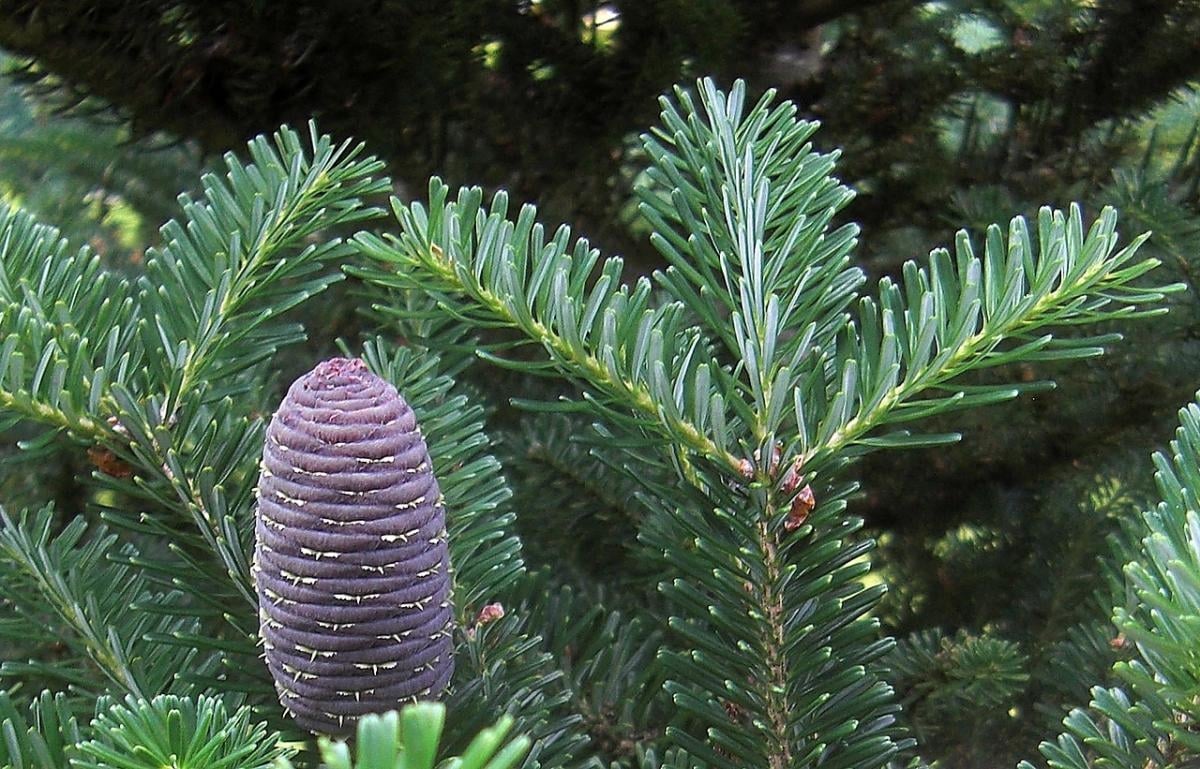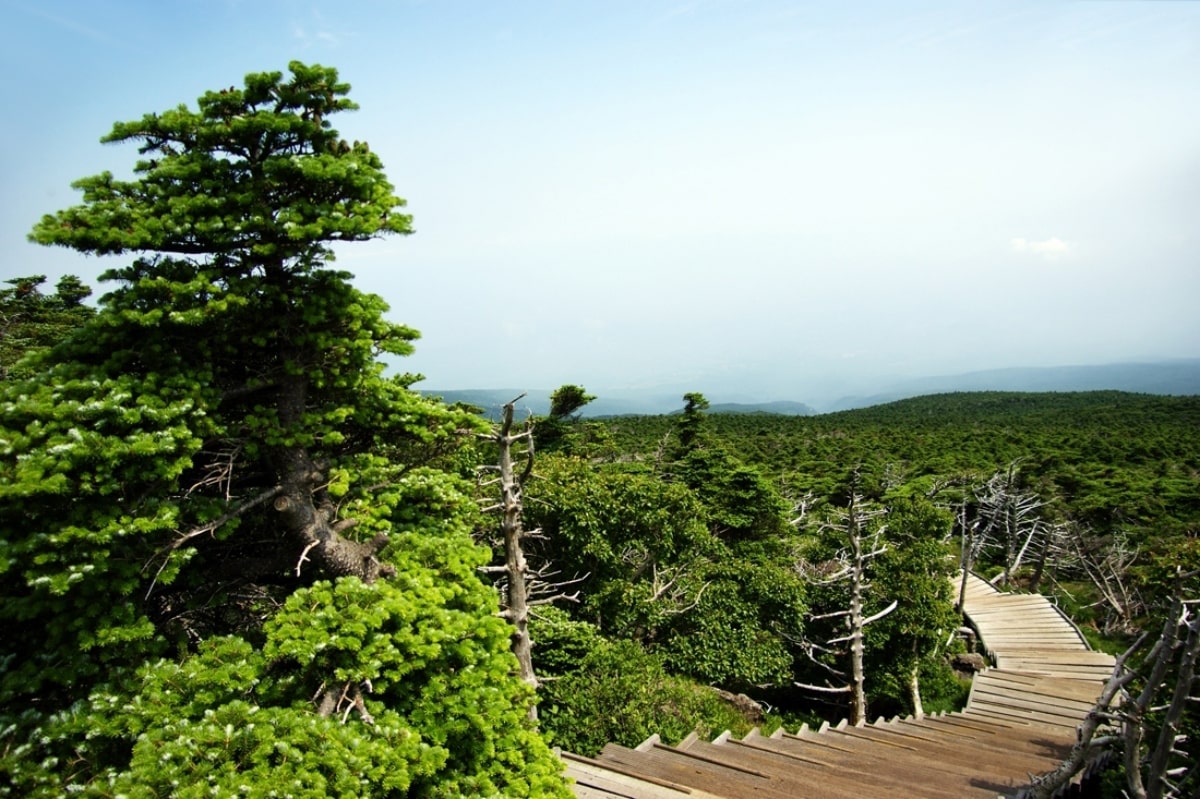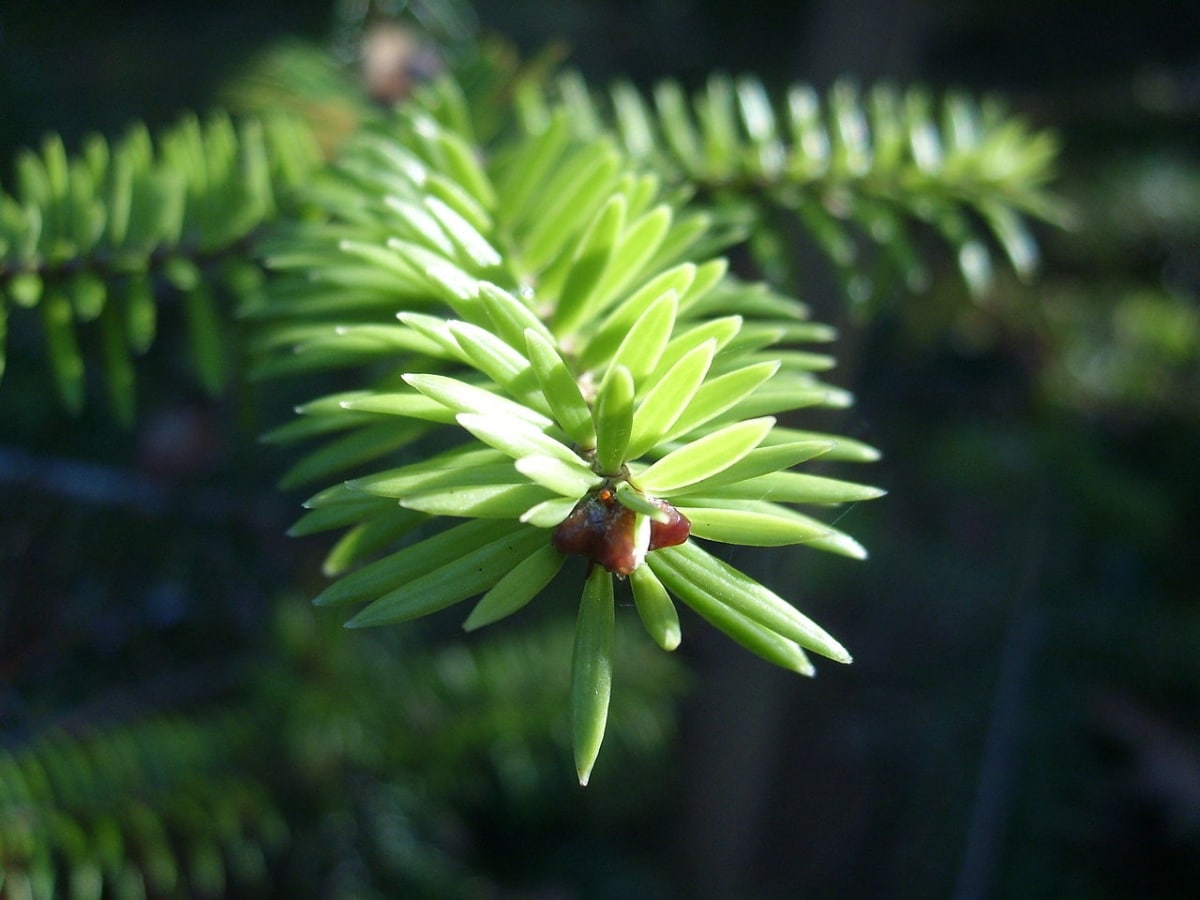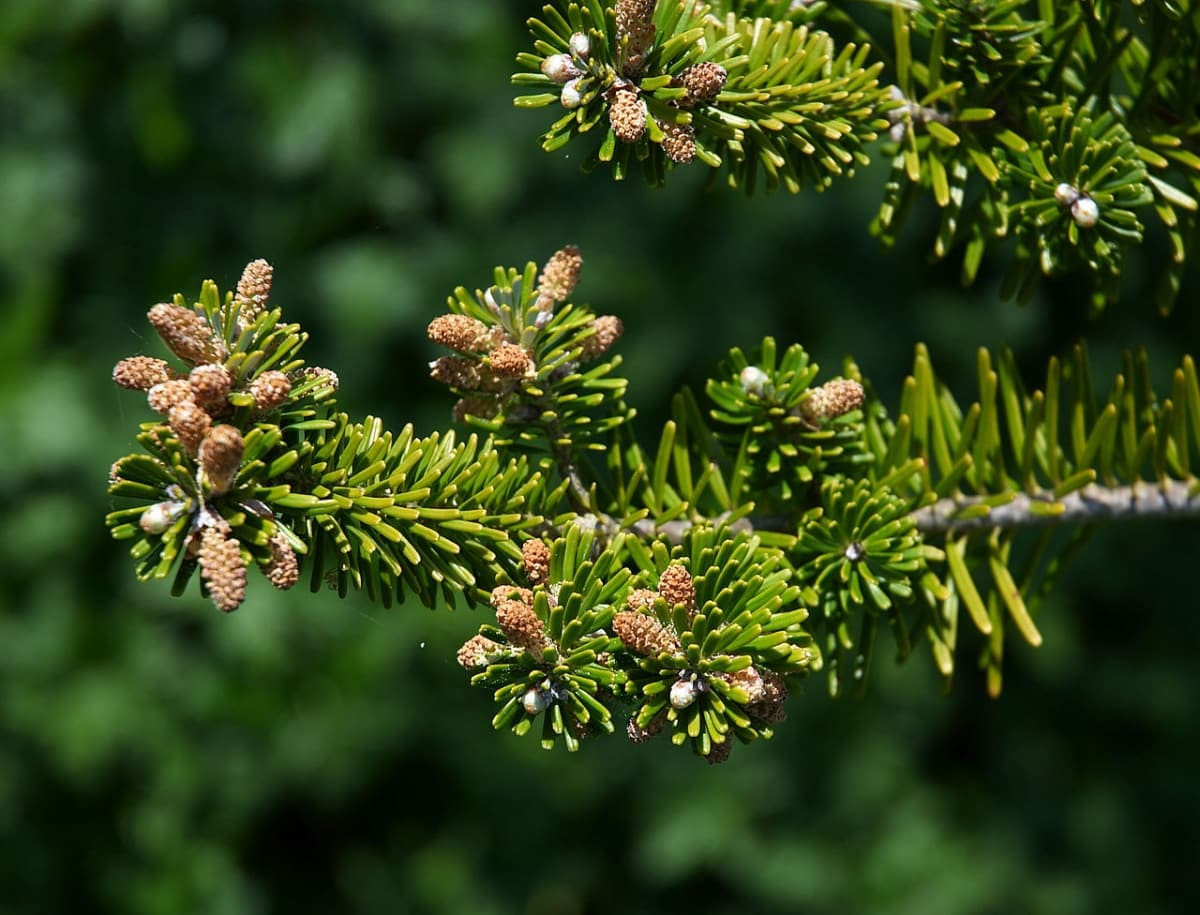
Image - Wikimedia / Gunnar Creutz
The Korean spruce is one of the most beautiful conifers in my opinion. It has a very elegant conical shape, and when it fructifies, its lilac-blue cones are very pretty.. One of the drawbacks is that its growth can be quite slow, especially in climates with high temperatures during the summer, above 35ºC, since when this happens it not only slows down but can even stop.
In fact, it is one of the conifers that best live in temperate regions, without extreme temperatures except in winter, where in the event of a heavy snowfall it will not suffer the slightest damage. Thats why he Abies koreana, is one of the evergreen trees that can best be, for example, in a mountain garden or in one where the thermometer drops below 0 degrees at some point.
What is the origin of Korean fir?

Image – Wikimedia/WSTAY
It is an evergreen conifer It is found wild in South Korea, and it can reach a height of 10 meters. Its scientific name is Abies koreana, but you may know it more by these popular names: Korea fir or Korean fir. As we anticipated, it grows slowly, about 10 centimeters a year, although it can be 15cm if the conditions are really good for it and it is in good health.

The leaves are acicular, that is, they are shaped like thick needles. These are dark green above and silvery below, which is why they are also sometimes called silver fir. In addition to its conical size, the cones are other elements that attract the attention of this plant, since they are blue or lilac, and they also measure about 10 centimeters in length more or less, so they are visible from afar.
For what do you use it?
The main use is decorative. It is planted as an isolated specimen or in alignments. It can also work as bonsai, since by having small leaves and a development that is well controlled, over time it is possible to have a particularly beautiful Korean spruce bonsai.
What are the care of the Abies koreana?
This is a tree with special needs that must be taken into account so that it is good, which is what interests us. It is a conifer that can be very easy to care for if conditions are good; that is, if the climate, soil and rainfall are adequate, but it will be very difficult to maintain if they are not. Therefore, we want to explain how to take care of it:
Where does it have to be?

Image - Wikimedia / Wouter Hagens
It is a conifer that it is recommended to plant in the garden as soon as possible. This will ensure that it grows at a normal rate for it (and not slower, which is what usually happens if it is kept in a pot), and that it also becomes stronger. In addition, it is important that it is in full sun.
As the roots of conifers are usually a reason for caution, since there are many species that can lift sidewalks or floors, or even break walls, with regard to Abies koreana We also have to be careful and plant it at least 5 meters from the area where there are pipes or floors with soft pavements.
How many times do you have to water it?
If the rains are not regular, and/or if it goes a long time without rain, the land will dry out and our protagonist could have a hard time. To avoid it, we will have to water it if we do not want it to dehydrate, with fresh and clean water. We will do it more frequently in summer than in winter, because in that season the temperatures are higher and the more water the tree needs.
Therefore, we will water an average of 2-4 times per week, that is, every two or three days, during the summer, and once or twice a week the rest of the year. Also, try to add enough water to reach all the roots well. For example, if it is in a pot, we will water until it comes out from under it; and if it is in the garden, you have to pour until the soil looks and feels soaked.
What type of soil do you need?
The Korean spruce grows in slightly acidic soils, so in clay soils it will have problems due to iron deficiency. So if you intend to plant it in a pot and keep it there for a few years, you will have to put a substrate for acid plants such as this; and if it is going to be in the garden, you should check the pH of the soil and see if it is between 4 and 6. In the event that it is higher, I recommend keeping it in a container, since although you can make a hole of 1 x 1m and fill it with acid soil, in the end the roots will touch the alkaline soil of the land and it will begin to have chlorosis problems.
How does it multiply?

To get new copies, seeds should be sown in winter, since they must be cold to germinate.
What is its resistance to cold?
It is a tree that resists frost up to -20ºC.
El Abies koreana it is a very pretty plant, which will certainly look great in temperate gardens.